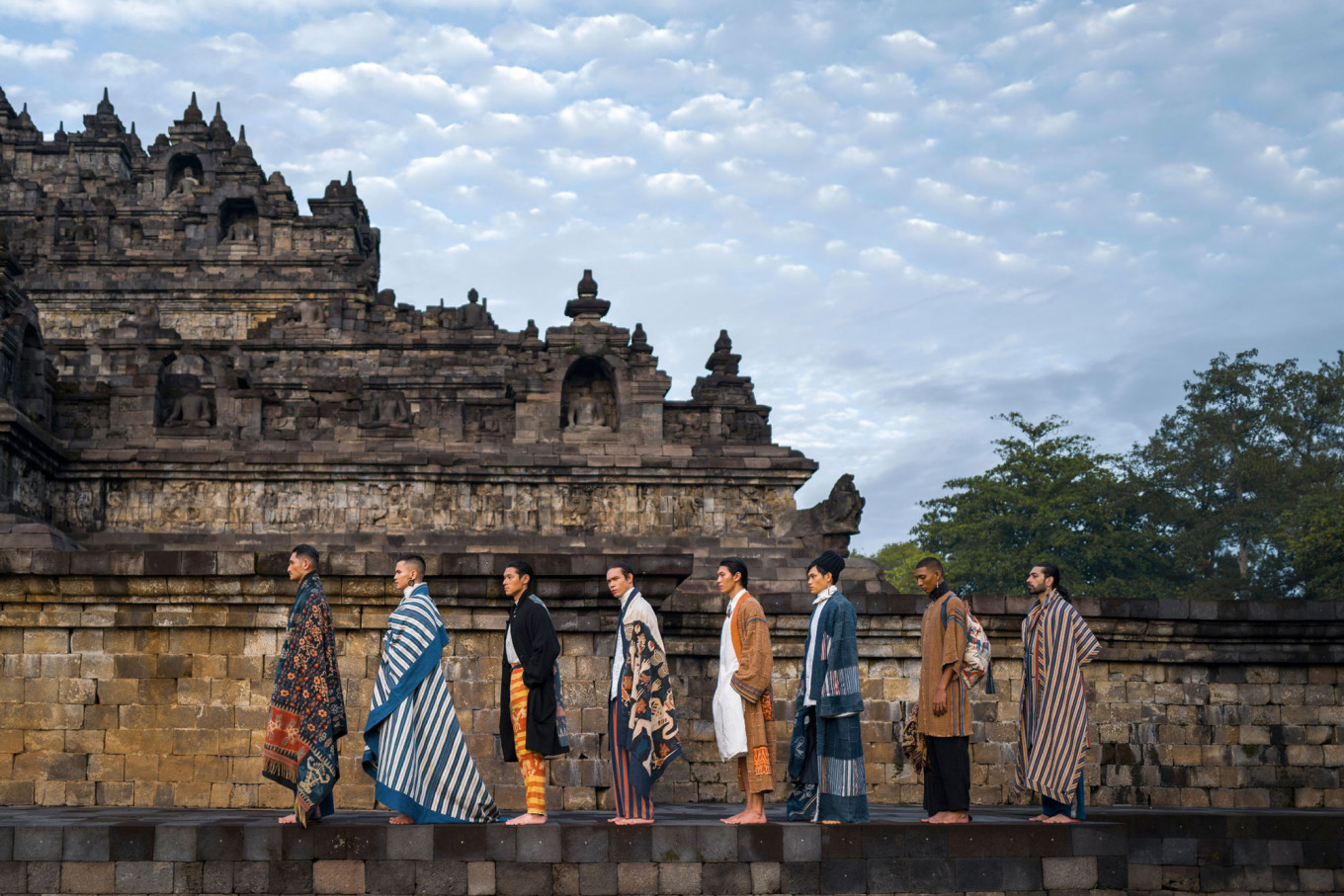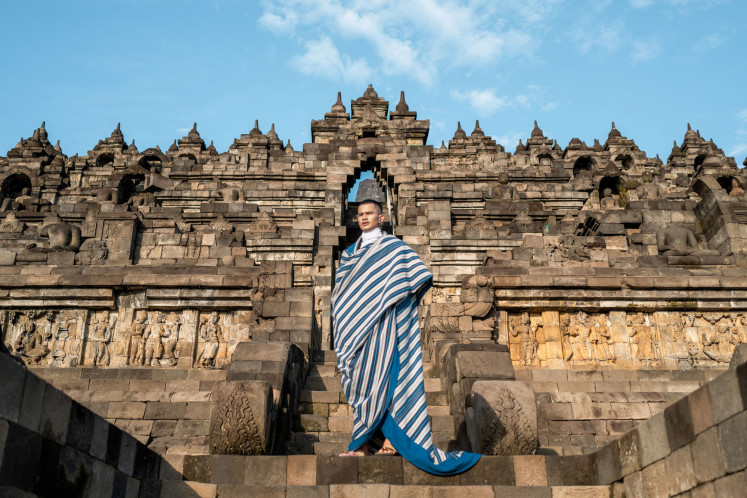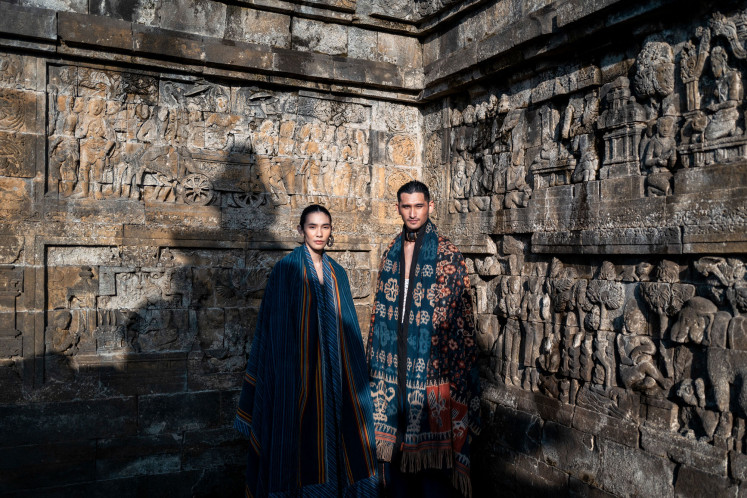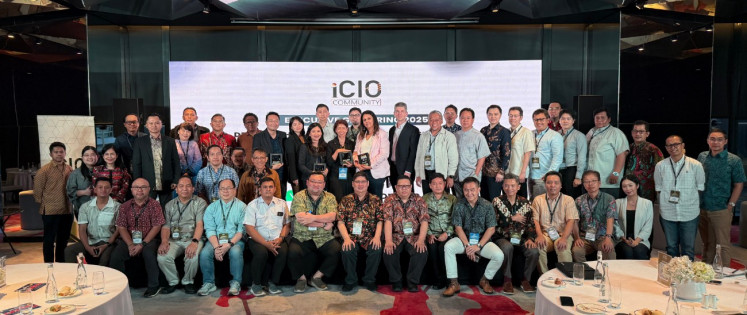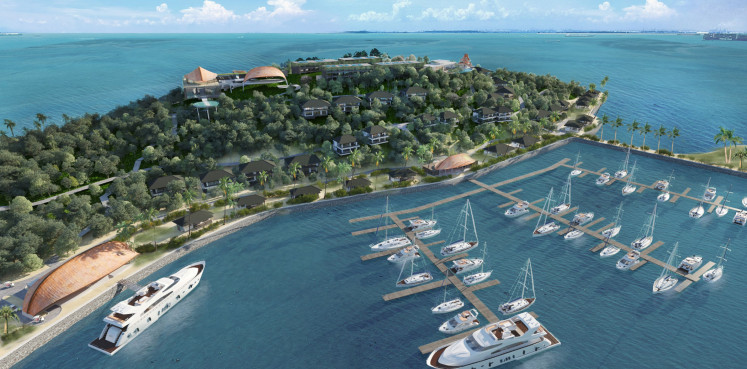Popular Reads
Top Results
Can't find what you're looking for?
View all search resultsPopular Reads
Top Results
Can't find what you're looking for?
View all search resultsSelimut Nusantara exhibit presents Indonesia’s diverse textiles in Paris
Change text size
Gift Premium Articles
to Anyone
T
he rich diversity of Indonesian textiles took center stage in an exhibition titled Selimut Nusantara (Blankets of the archipelago) at the Carrousel du Louvre shopping center in Paris.
Running from Nov. 28, 2023 to Jan. 8, 2024, the exhibition showcases traditional textiles from across the country, including ikat tenun from Sumba and Timor in East Nusa Tenggara (NTT), as well as Bali and Sumbawa in West Nusa Tenggara, and ulos and songket from Samosir regency, Sumatra.
The exhibit also features the beauty of Borobudur Temple, the largest Buddhist temple in the world.
Selimut Nusantara is the brainchild of renowned fashion designer Edward Hutabarat, who is known for his dedication to exploring the beauty and diversity of his homeland. His latest endeavor entailed exploring the cultural significance of tenun (handwoven textiles), particularly those from NTT province.
"Indonesia is known for its sandang [garments], pangan [foods] and papan [houses], and these are what constitute its civilization,” he said, referring to traditional textiles as “blankets of civilization”.
Accompanying he textiles on display are Edward's photographs, which offer a glimpse into their origins and intricate creative processes.
He took the photos during his numerous trips to different regions of the archipelago over the last two decades, to observe and chronicle the lives and communities of weavers that produce these textiles.
With more than 17,000 islands and hundreds of ethnic groups and languages, the maritime nation is home to many fishing and farming communities. Textiles serve functions integral to these peoples’ lives as blankets and outer garments to provide warmth, with fishers even taking textiles with them as they set sail in search of fish.
"The civilization of Indonesia is closely tied to these ‘blankets’,” said Edward.
“However, selimut are known by other local names in Indonesia, such as sarung [sarong] and jarit [long batik fabric], among others,” he said.
The exhibition also features a tribute to Borobudur Temple in Central Java.
The majestic temple complex served as the venue for a fashion show featuring some of Edward’s textile creations, held in November 2022 with support from the Education, Culture, Research and Technology Ministry.
The ministry also supported the Selimut Nusantara exhibit, in collaboration with the Paris-based digital startup Best of Indonesia.
Tenun, textiles woven by hand that use entirely natural materials, have played a pivotal role in the daily lives of Indonesia’s peoples and cultures over the centuries.
In Selimut Nusantara, Edward pushes the boundaries of tenun and challenges the role of these “blankets of civilization” in the international context.
"I want selimut to become part of the international lifestyle. Each time I work on developing the Indonesian heritage, I focus on four main aspects, namely identity, quality, creativity and simplicity,” he said.
“[Through] these points, I create an East-meets-West scenario. This genderless trend comes with taste and feel, reflecting harmony, not ambition or emotion.
“How beautiful they look at sunrise, sunset or even [in the moonlight]. They can be taken anywhere: for a stroll in town or on a luxury trip where they are washed in the open sea and hung out to dry in the harbor," Edward mused.

